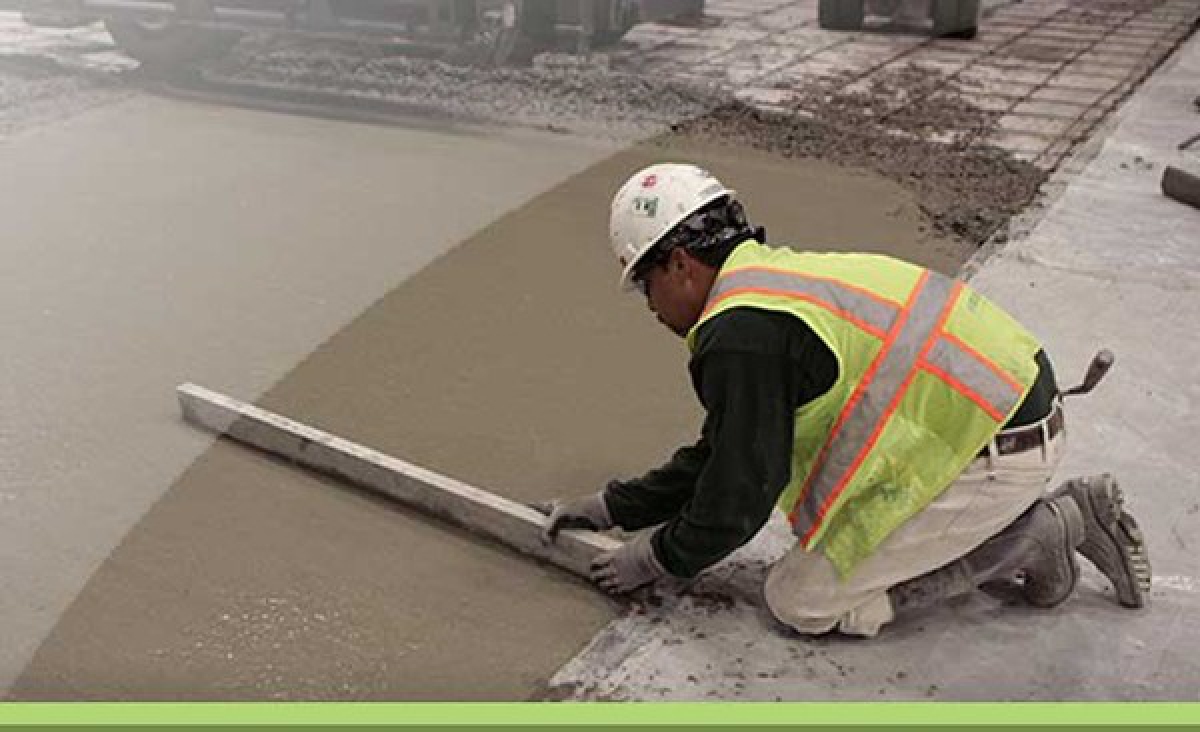Shrinkage Compensating Concrete Requires Experienced Floor Contractors
Shrinkage compensating concrete, also called SCC, has become the preferred material for industrial concrete floors. It offers many advantages over conventional concrete from a building owner’s point of view.
A floor constructed with shrinkage compensating concrete provides a stronger, more durable, abrasion, and impact-resistant floor with fewer joints. The result is lower maintenance costs for the life of the facility.
However, these benefits will only accrue through using an experienced floor contractor who knows and understands how SCC works.
What Is Shrinkage Compensating Concrete?
SCC is created from an expansive cement. This cement actually expands through the formation of ettringite crystals during the first week of curing. Once the wet cure is complete the concrete will return to original size.
Normal concrete doesn’t do this. Due to the loss of volume through water evaporation the concrete begins to shrink after pouring and contracts to a smaller volume or size. If the floor is not designed and installed properly this results in cracking, curling, and, ultimately, spalling at the joints.
Shrinkage compensating concrete minimizes and resists cracking and curling. SCC increases its size through expansion restrained by internal reinforcement. Compressive stress is placed on the concrete internally, which is then relieved by subsequent minimal shrinkage. The expansive property controls the shrinkage in such a way as to reduce or eliminate that seen in normal cement.
What an Experienced Floor Contractor Knows About SCC
Because SCC behaves differently from conventional cement, such as Portland, experience using it is the building block of success when installing a quality concrete floor.
Properties
Shrinkage compensating concrete is stiffer and more cohesive than normal cement. It also sets more quickly and loses slump very rapidly. This means the concrete floor contractor must have a coordinated, efficient method for installation and finishing.
Testing
Proper testing of the local materials with expansive cement prior to the start of the project is required to ensure the performance of the floor slab. This testing determines how the expansive cement reacts with the local cement, aggregates, and water reducers.
Environmental Conditions
As noted above, SCC loses slump more rapidly than conventional concrete. Hot, dry, and/or windy conditions exacerbate this tendency. If not coordinated and handled correctly, excessive tempering reduces the strength and expansive properties, eliminating the advantages of SCC.
Placement Plan
SCC requires 2 perpendicular sides to be open (free) to allow for expansion for a minimum of 48 hours. The restrained sides can be walls, columns, or concrete slab that has already cured. It is also possible to use compressible filler between the SCC and the restraining side. A qualified and experienced contractor knows how to sequence the placements in order to maintain or advance the construction schedule.
Variation
Shrinkage compensating concrete is more sensitive than normal cement to variations in the mix design, humidity, temperature, and reinforcement. The contractor must take this into account when placing the concrete and in the curing process. Additional testing may be required to maintain quality.
Conclusion
Working with shrinkage compensating concrete is not like working with conventional concrete. Without experience in installation, the contractor may fail to plan the placement correctly. He may not provide the appropriate curing environment or he may neglect to contact the ready-mix producer about the compatibility of various admixtures with the expansive cement provided. An inexperienced floor contractor may even fail to perform the proper ASTM C878 expansion testing.
When hiring a concrete floor contractor, look for one that has successfully installed durable floors using shrinkage compensating concrete. Try to get references for floors which have stood the test of time. Ask how many installations have been done and call references to inquire about the current state of those floors.

